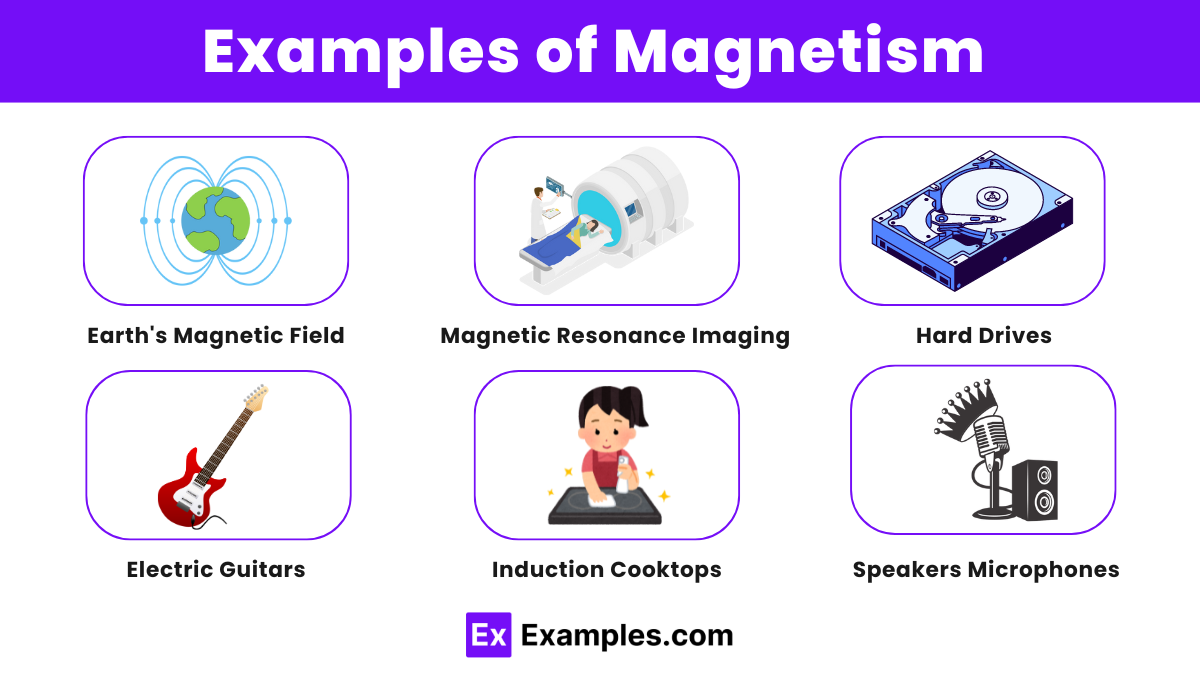What is the basic source of magnetism?
Electric charges in motion
Static electric charges
Neutrons in atoms
Nuclear reactions


Magnetism is a fundamental force caused by the motion of electric charges, resulting in attractive and repulsive forces between objects. It manifests through magnetic fields generated by electric currents and the intrinsic magnetic moments of particles. The unit of magnetic field is the Tesla (T). Electromagnetism, the study of interactions between electric currents and magnetic fields, is governed by the laws of electrodynamics such as Ampère’s Law, Faraday’s Law, and Lenz’s Law. This force is essential for phenomena like the Earth’s magnetic field and technologies like electric motors and transformers.
Magnetism is a physical phenomenon where moving electric charges produce magnetic fields that cause attractive and repulsive forces between objects. It is fundamental to various applications, including compasses, electric motors, and data storage devices.

Ferromagnetism is the most common type of magnetism, exhibited by materials like iron, cobalt, and nickel. In ferromagnetic materials, magnetic moments of atoms align in the same direction, creating a strong, permanent magnetic field. This alignment is maintained even after the external magnetic field is removed.
Paramagnetism occurs in materials with unpaired electrons that align with an external magnetic field. Unlike ferromagnetism, the alignment in paramagnetic materials is weak and only exists in the presence of an external magnetic field. When the field is removed, the magnetic moments return to a random orientation.
Diamagnetism is a weak form of magnetism that appears in all materials. It occurs when an external magnetic field induces a small magnetic field in the opposite direction within the material. This effect is typically very weak and only noticeable in materials that do not exhibit other forms of magnetism.
Antiferromagnetism is observed in materials where adjacent atoms or ions have opposite magnetic moments, resulting in no net magnetic field. The magnetic moments cancel each other out due to an anti-parallel alignment. This type of magnetism is temperature-dependent and diminishes above a certain temperature called the Néel temperature.
Ferrimagnetism is similar to anti ferromagnetism but with unequal opposing magnetic moments, leading to a net magnetic field. This type of magnetism is found in materials like magnetite (Fe3O4) and some ceramics. Ferrimagnetic materials are commonly used in magnetic storage and electronic devices due to their high magnetic permeability.
Magnetism exhibits several key properties that define its behavior and effects:
Magnetic fields are invisible areas of influence around a magnet where magnetic forces can be detected.
Iron, nickel, cobalt, and some rare earth metals are typically magnetic because their atomic structure allows their magnetic moments to align.
Magnets have two poles: the north pole and the south pole. Opposite poles attract each other, while like poles repel.
Magnets attract when opposite poles (north and south) face each other and repel when like poles (north-north or south-south) face each other.
A magnetic domain is a region within a material where the magnetic moments of atoms are aligned in the same direction.
The Earth’s magnetic field is generated by movements within its molten iron core and protects the planet from solar wind and cosmic radiation.
An electromagnet is a type of magnet created by running electric current through a wire coiled around a metal core, typically iron.
A compass works by aligning its magnetic needle with the Earth’s magnetic field, pointing towards the magnetic north pole.
Magnetic induction is the process by which a material can become magnetized by the influence of an external magnetic field.
Ferromagnetic materials can be permanently magnetized, while paramagnetic materials are only magnetized in the presence of an external magnetic field.
Text prompt
Add Tone
10 Examples of Public speaking
20 Examples of Gas lighting
What is the basic source of magnetism?
Electric charges in motion
Static electric charges
Neutrons in atoms
Nuclear reactions
Which material is commonly used to make permanent magnets?
Aluminum
Copper
Iron
Plastic
What happens when a north pole of a magnet is brought close to the north pole of another magnet?
They attract each other
They repel each other
They rotate to align north to south
There is no interaction
What is a magnetic field?
The space around a magnet where its force is effective
A force that only affects metals
The area where electric currents are strongest
The physical surface of a magnet
What is the SI unit for magnetic field strength?
Tesla
Newton
Joule
Ampere
Which of the following materials is not magnetic?
Iron
Nickel
Copper
Cobalt
How can a magnetic field be detected?
By using a thermometer
By using a compass
By measuring the electric current
By observing water displacement
What is magnetic flux?
The amount of magnetic field passing through a given area
The force exerted by a magnetic field
The rate of change of magnetic field
The direction of a magnetic field
Which law explains the force between two current-carrying conductors?
Ohm’s Law
Newton’s Law
Ampère’s Law
Coulomb’s Law
What is the right-hand rule in magnetism?
A method to find the direction of electric current
A method to find the direction of magnetic field around a current-carrying conductor
A way to calculate magnetic flux
A rule for determining magnetic pole strength
Before you leave, take our quick quiz to enhance your learning!

